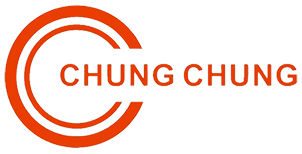As an important part of traditional materials, glass products industry has shown broad development prospects in recent years, driven by technological innovation, green transformation and market demand upgrading. The following analyzes its future development path from four dimensions: industry trends, technological breakthroughs, market opportunities and challenges:
First, technological innovation drives industrial upgrading
Acceleration of localization and substitution of high-end materials
Taking medium borosilicate medical glass as an example, domestic enterprises have gradually broken the international monopoly through technical research. Fuyao Glass, CSG and other head enterprises have achieved mass production of medium borosilicate glass, and the proportion of replacing imports has increased significantly. This trend not only reduces the packaging cost of domestic pharmaceutical industry, but also promotes the extension of glass products to high value-added fields.
Integration of intelligence and green technology
The glass industry cluster has been transformed through "digital empowerment+technological breakthrough", and the old production lines have been upgraded to digital and automatic production lines to produce high value-added products such as photovoltaic glass and ultra-thin electronic glass. At the same time, the industry has accelerated the promotion of cleaner production technologies such as electric furnaces and hydrogen fuel, promoted the transformation of "coal to gas" kilns, and reduced carbon emissions, which is in line with the global sustainable development trend.
Second, the upgrading of market demand structure
Demand growth in building and photovoltaic fields
With the popularization of green building concept, the market demand for energy-saving products such as Low-E glass and vacuum glass continues to grow. The data shows that the global energy-saving glass market has reached 150.758 billion yuan in 2023, and it is expected to increase to 180.018 billion yuan in 2029. In the field of photovoltaic glass, the demand for double-sided power generation components and BIPV (photovoltaic building integration) technology is driven, and the global market scale is expected to reach 50 billion yuan in 2025.
Demand diversification in automobile and electronics fields
The automobile industry is transforming into new energy and intelligence, which promotes the growth of demand for ultra-thin and high-strength electronic glass. For example, the popularity of 5G communication and smart wearable devices has driven the application of ultra-thin glass in smart phones, tablet computers and car monitors. In 2023, the output of electronic glass in China will reach 860 million square meters, with huge market potential.
Third, policies and capital help industry integration
Policy Support Promotes Green Transformation
At the national level, policies such as "Outline of Building a Powerful Country by Quality" were issued to encourage the research and development and application of new building materials with high strength, high durability and recyclability. Local governments support technological transformation and industrial upgrading of enterprises through financial subsidies, tax incentives and other measures. For example, Hunan province promotes the glass industry to "change coal into gas" and promotes the development of non-fossil energy.
Capital focuses on high value-added areas
In 2023, the global R&D investment in glass technology exceeded US$ 12 billion, with China accounting for 35%, leading the development of emerging technologies. Capital is inclined to high value-added fields such as photovoltaic glass, electronic glass and medical glass, which promotes the concentration of the industry. Through industry consolidation, head enterprises have formed an integrated mode from quartz sand mining to deep processing, reducing costs and increasing efficiency.
Fourth, challenges and opportunities coexist
Challenge: environmental pressure and cost fluctuation
Strict environmental protection policies require enterprises to increase investment in environmental protection, and small and medium-sized production capacity is under pressure. At the same time, risks such as fluctuations in raw material prices and international trade frictions still need to be vigilant. For example, the rising cost of raw materials such as soda ash may reduce the profit margin of enterprises.
Opportunity: Global Layout and Technology Export
The infrastructure construction in countries along the Belt and Road will drive the export of architectural glass, and the demand for high-end customized products (such as art glass and intelligent dimming glass) in European and American markets will provide enterprises with premium space. China enterprises seize the international market share through technology export and service chain extension.
V. Prospects for the future
The glass products industry is moving from a "manufacturing power" to a "intelligent power". Technological innovation and policy dividends will promote the industry to upgrade in the direction of high added value, green and intelligence. Enterprises need to focus on three core competencies: breaking through the technical barriers of high-end materials, building a circular economy system and deepening the global layout. In the next decade, the industry concentration will continue to increase, and the head enterprises with industry consolidation-wide capabilities and sustained R&D investment are expected to dominate the market structure.

